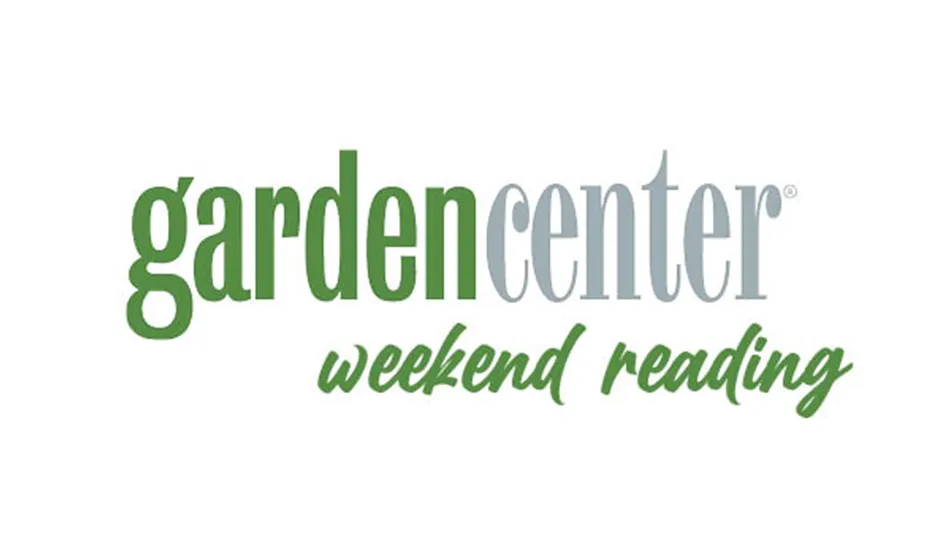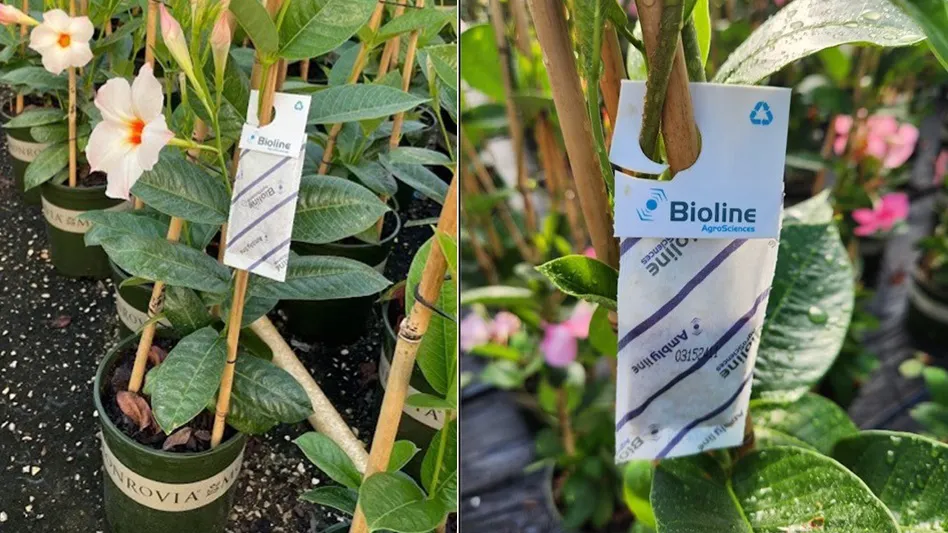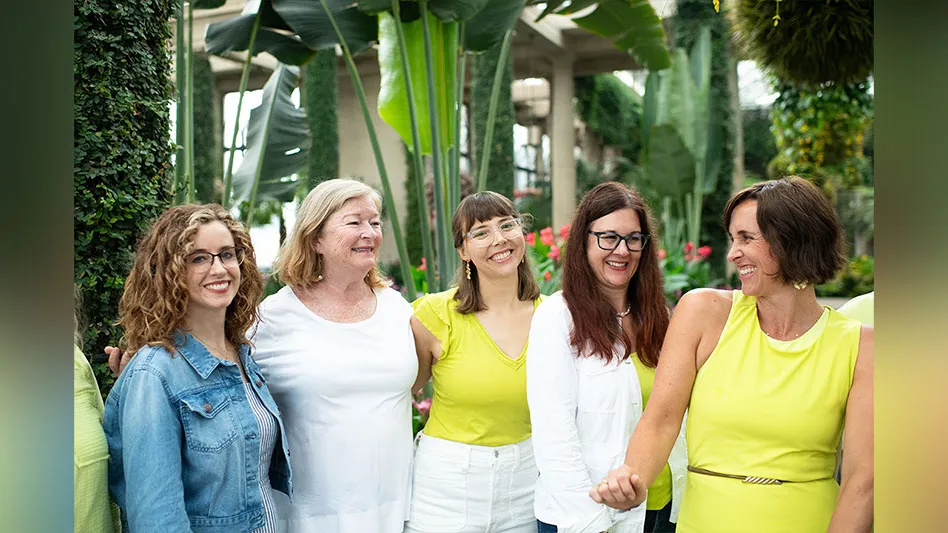
Industrial agriculture haunts the North American home vegetable garden. A kitchen garden is a pastoral echo: It’s a space fenced in and set aside from frivolous and pretty ornamentals. It’s a loamy patch where carrots and cabbages are martialed into tidy parallel rows. It’s a backyard island where raised beds place edibles on segregated pedestals. And all of it is, essentially, farming in miniature.
But Brie Arthur, author of The Foodscape Revolution, would like to change the paradigm. “You know, in this century, people don't have room to have an isolated vegetable garden,” she says. “And if you're hand planting and you're hand harvesting, you don't have to grow your vegetables in straight lines. That's for mechanized farming.”
Arthur is unequivocal about how lingering industrial agricultural ideals have hampered the humble vegetable grower. She wants garden consumers to stop planting like they have acreage and a combine tractor and start maximizing the space they have available. “You’re not a farmer,” she says. “You’re a home gardener.”
The solution, Arthur says, is found in edible landscaping, or “foodscaping.” The concept is fairly simple. The core of the practice is simply integrating food-producing plants into parts of a home landscape that would have been set aside for shrubs, annuals and perennials.
“I would say foodscaping is the logical integration of edibles in an ornamental space that will appease your neighbors,” Arthur explains.
The practice solves several problems gardeners face — and not just those hoping to grow juicy tomatoes. But Arthur says foodscaping also gives independent garden centers a new way to think about merchandising and selling vegetables that could lead to a passionate clientele that returns throughout the year and helps increase profits for edible plants. What’s more, she says, it doesn’t take much for an IGC to adjust their sales practices and capitalize on a growing trend.
More Food Gardens, Less Space
The decade opened with a significant increase in interest in food producing gardens. According to the research division of the National Gardening Association, there was an 8% jump in households participating in food gardening between 2019 and 2020. By 2022, 44% of households had started to grow their own food.
That percentage includes any plants like herbs and fruits. If you isolate those simply growing vegetables, the data show that 41.6 million households in the U.S. grew some kind of vegetable in 2022.
According to National Gardening Association Executive Director Dave Whitinger, the most popular food producer for home gardeners is the tomato plant. “We’re seeing a lot of interest in dwarf varieties,” he says. “Especially from the Dwarf Tomato Project, introduced through Victory Seed, which are great for containers and small yards. They make full size fruit on smaller plants.”
And, Whitinger notes, small plants that produce a lot seem to be a widespread trend for vegetable gardeners. “Really, smaller varieties are popular across the board,” he says. “Whether it’s watermelons, squashes, tomatoes or peppers. Homeowners like plants that don’t take up as much space in the garden, so they can grow more with less space, and their spaces don’t look bad with huge plants.”
It makes sense that size matters for modern food gardeners. According to the U.S. Census Bureau, the median lot size of new detached single-family houses sold in the U.S. has decreased by 2,000 square feet since 1992. Meanwhile, the median square footage of new homes themselves has increased by 500 square feet, from 1,900 in 1992 to 2,383 in 2022.
That means between shrinking lots and growing home footprints, home gardeners have much less space to grow what they want to eat. That’s particularly true for new homes that already have landscaping taking up precious space.
Moreover, homeowners’ associations (HOAs) often mandate and police existing landscaping. These associations are also on the rise. In fact, the Census Bureau reports 84% of new single-family homes sold in the U.S. in 2022 are connected to HOAs, up from 62% in 2009.
It can all create an impossible situation for gardeners. Stories about gardeners having run-ins with their city governments or HOAs have become a regular feature on local news and social media. The conflicts have led some state legislatures to protect food gardening. There are currently laws on the books protecting vegetable patches in Florida and Illinois. Wisconsin Republicans introduced a similar bill last year. But with so few state protections in place around the country, homeowners often need to find clever ways to grow edibles in a limited space without running afoul of busybody neighbors.

Foodscaping Solutions
Homeowners can surmount the barriers affecting home food gardeners, including space limitations and HOA regulations, through edible landscaping, according to Arthur. And the bonus is that not only will growing food become a habit and a pleasure, but ornamentals will also do better.
Overcoming space issues is the obvious initial benefit to foodscaping. Arthur says the sheer variety of vegetables available to consumers means there is always something that will fit in the available space among ornamental evergreens and flowers.
“You can grow cabbage among your foundation shrubs,” she says. “Just fill up the space you have.”
She notes that adding vegetables into available foundation plantings places veggies closer at hand. That convenience means gardeners will likely see and use the food they grow more readily, making the practice of garden-to-table a habit.
Plus, denser planting means less weeding. It also means less need to mulch as the year turns. And where mixed ornamental and food gardens expand to take the space of thirsty turf-grass, there can be water savings, which can be a boon in places with water restrictions.
There are aesthetic benefits, too. Many edibles are simply gorgeous to look at and seem purpose-made for Instagram. That’s a win-win for younger gardeners who want to post a close-up of Romanesco broccoli fractals or thrill their followers with the curly-spiked bulbils of Egyptian walking garlic (before adding it to a Bloody Mary).
And finally, because vegetable gardeners understand their plants need good compost and care, the otherwise neglected ornamentals begin to thrive because the quality of the soil naturally begins to increase with care. “You’ll end up with less insect pressure, better growth and better flowering on your ornamental plants, in addition to the fact that you have harvestable square footage adjacent,” Arthur says.
Pete Kanaris, owner of Florida IGC GreenDreams, has built his retail business on the idea of creating edible landscapes for his clients with the goal of helping people escape reliance on industrial agriculture. His background is in traditional landscaping, but he had something of an epiphany when he realized that landscapes could include edible plants. “We started offering clients home gardens,” he says. “Merging permaculture, natives and native landscaping.”
For the last 15 years, Kanaris has sold and installed edible landscapes while offering his clients both education and maintenance services. He works on a variety of scales, from larger “food forests” with unique fruiting trees to what he refers to as “cookie-cutter HOAs.”
Kanaris notes that in the smaller spaces, it’s fairly easy to sneak an avocado or edible perennial into the front beds, simply because they are pretty. But he does admit that HOAs still often require a “permaculture mullet, with a business in the front and party in the back situation.”
The GreenDreams technique is built very much on standard landscape layering. Kanaris might have a jackfruit tree as a focal point and some “cape hibiscus” with edible flowers. In front of that, he might switch out standard ornamental grasses with a more helpful and usable lemongrass. Lower herbaceous perennials like the purple-blooming society garlic (Tulbaghia violacea) are layered into the front of beds, along with a ground cover mimosa (Mimosa strigillosa), which is not edible but fixes nitrogen and attracts beneficial predatory insects.
“It's all about creating this diverse, moving ecosystem,” Kanaris says. “And there’s nothing like the zero-carbon travel of walking out your back door and eating food that was fresh grown out of soil you’re building in your back yard. It doesn’t get any more local than that.”
Kanaris believes IGCs that aren’t selling edibles to complement their ornamental stock are missing out on a huge opportunity. He suggests simply working on some starts. “Seed out some trays,” he says. “Add them up front. It’ll cost you a couple of pennies. You could turn 10 cents into a dollar.”

Selling the Foodscape
It’s possible that not all IGCs will have customers that will want or need to add edibles into ornamental landscapes. Those in rural areas with room and resources for a traditional vegetable garden, for instance, may not see value in the practice. But for those IGCs in more densely populated areas, it makes sense to offer customers a unique solution to food growing problems. Plus, if foodscaping practices improve the health of ornamentals, through soil improvements and beneficial insects, that success will only reflect well on the source IGC.
It may seem daunting to introduce customers to a new way of vegetable gardening, but Arthur notes there are three primary areas to focus on: the right varieties, the right education and the right merchandising:
Delight with Displays
The simplest step to take is adjusting plant merchandising. “Stop isolating vegetables on their own table,” Arthur says. “Demonstrate by having the vegetables integrated with ornamentals on display. That immediately sets the stage for the consumer to better understand how to take that and apply it to their home.”
And, she says, it’s important not to get bogged down in the details. Yes, it makes sense for pretty plants to contrast and play off each other, but Arthur is clear that there are no ornamental and vegetable combinations that are going to create some kind of magical pairing.
Of course, it doesn’t hurt to provide some context to any foodscaping displays. Consider point-of-purchase signage that calls out edible landscaping and add a few bullet points about its benefits, including buying fewer veggies at the store, being HOA-friendly and saving space and labor.
Arthur also suggests a semi-permanent planted foodscaping display that will allow customers to see the way an edible landscape changes through the season. It can work as a demonstration space that helps gardeners understand how to manage their plants and see what’s in season.
Seek Superior Selections
Arthur notes the biggest competitors for IGCs looking to sell vegetables are big-box stores and the supermarket. Both places tend to aim toward the average and safe. As such, they have a stranglehold on selling the typical vegetables consumers might want. A beefsteak tomato is easy to get either in a produce bin or as a start. So are a host of other popular vegetables.
Differentiation is key, and Arthur suggests IGCs look for more unique options. “The advantage the garden center has is to offer varieties that aren't the same as what the grocery store has,” she says. “So that when you grow it, you’re like, ‘Oh, there’s nowhere else I could get this.’”
For proof of this concept, she points to the incredible boom in the seed industry, particularly around interesting vegetable varieties. Arthur says it’s worth it to explore unique bestsellers from places like Victory Seed Company or Baker Creek.
She also suggests steering clear of most heirloom varieties. Although they hold a particular mystique for some gardeners, they can be fragile when it comes to modern diseases. There are some exceptions — she calls out the Cream Sausage tomato, for instance — but heirlooms can lead to more frustration than success, which can cause vegetable gardeners to give up.

Offer Education
Arthur believes one of the best ways to support gardeners with foodscaping is by providing helpful information that will enable them to thrive. And the act of growing vegetables provides natural inflection points — from sowing to post-harvest — where IGCs can offer educational opportunities.
It can simply start with seed sowing workshops in the greenhouse. Given that customers can start so many vegetable seeds in windowsills, these opportunities are a clever way to get customer engagement before the spring season hits. And even as the spring passes, there are always new vegetables to plant from seed deep into the summer, meaning seeding workshops can become a regular beat in an IGC’s event calendar.
Once consumers plant the seeds, Arthur suggests IGCs leverage their marketing infrastructure to check in and offer additional solutions. “You know, here’s the fertilizer you need to use. And these are the insects you need to be looking out for. And here are the organic products that will serve as solutions for that. And better yet, here are some perennials you can grow that will bring in beneficial insects that will knock down problem bugs and make it so that you don’t have to do anything,” she says.
Then, as gardeners harvest their food, IGCs are primed to help them understand what to do with their bounty, Arthur says. She recommends cooking or cocktail classes connected to what’s in season. In the fall, she suggests canning classes to preserve the bounty.
“And you don’t need to have someone on staff that knows how to do it,” she notes. “IGCs can hire someone to come in and teach those courses. And there’s opportunity to sell canning supplies seasonally and make it an event.”
No matter how IGCs engage with the idea of foodscaping, Arthur is adamant that mixing veggies with ornamentals is a winning combination.
“In the long haul, it’s worth more, because you’re not buying Knock Out Roses every time you walk into that garden center,” she says. “With vegetable gardening, you have a consumer coming in probably once a month. It’s the easiest way to cultivate a regular customer.”
And all it takes is thinking outside the rows.

Explore the February 2024 Issue
Check out more from this issue and find you next story to read.
Latest from Garden Center
- Weekend Reading 5/17/24
- GardenComm 2024 Annual Conference registration is open
- Landmark Plastic celebrates 40 years
- Proven Winners introduces more than 100 new varieties for 2025
- Weekend Reading 5/10/24
- The Family Business, Part 2: Agreeing (and disagreeing) on capital investments
- Registration opens for Darwin Perennials Day
- Weekend Reading 5/3/24





